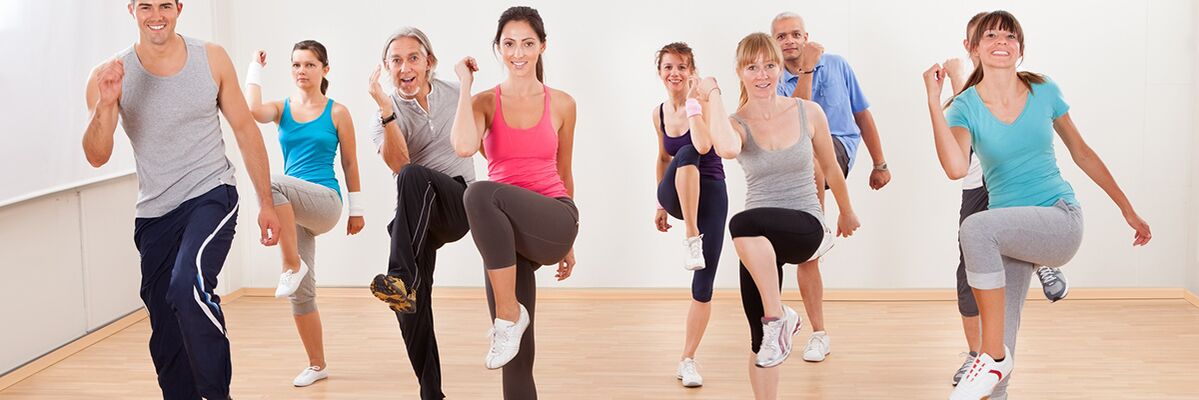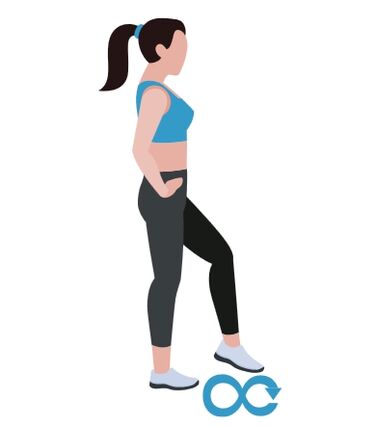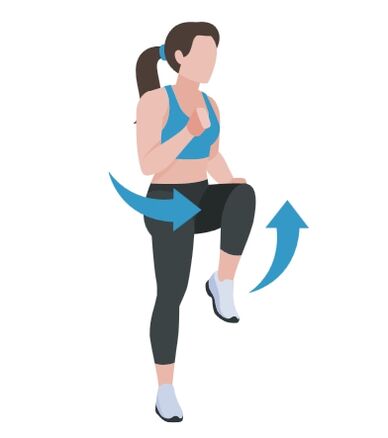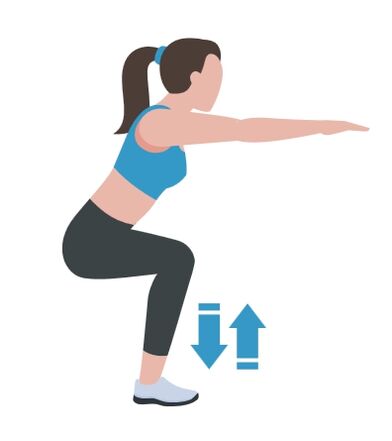
Have you noticed your legs quickly start to feel numb? And then you have to knead them for a long and annoying time?
Is your leg often swollen and painful for no reason?
Could the skin on your legs be covered with a network of blood vessels causing discomfort?
At least one answer is affirmative - and you are at risk. Most likely you have varicose veins of the lower extremities. Due to this disease, the veins increase, and this already leads to a violation of blood flow - some of the blood goes from the deep vessels into the superficial ones.
There are even disappointing statistics about this ratio. Accordingly, in developed countries, 30% of women and 10% of men have the disease. And these are just those who have reached the doctor. As you can imagine, in reality, this number is much higher, especially among people over the age of 50.
Varicose veins begin with mild discomfort and do not cause serious problems. This is how he is cunning. Because of "such nonsense" I didn't want to go to the doctor, and the disease, meanwhile, was progressing. The skin gradually darkens, the blood vessels bulge like ropes, and even nutritional sores appear. Blood clots form in the affected veins, then travel into other organs and disrupt blood circulation in them. As a result, a deadly outcome is possible.
Have you ever thought that you could die from simple varicose veins?
People don't think about this. And it will be worth it.
After all, all of this is easy to avoid - you just need to get to the phlebotomist on time. He will outline a detailed program of complex treatment and exercise that will occupy an important place in it.
Let's face it, not all types of exercise are equally beneficial. Some exercises will ease your varicose veins, while others will aggravate your condition. Hurry to the hospital.
Agree, it is worth distinguishing one from the other.
In this article, we will tell you in detail how to treat varicose veins with effective exercise.
But wait, you might panic soon. You probably don't have varicose veins at all. Now let's compare your situation with the main signs of varicose veins.
How to spot varicose veins, even if it's just starting
Some signs are visible to the naked eye, others can only be felt. Let's start with the outward appearance.
There are four main ones:
- Spider webs of blood vessels appear on the skin, usually red, blue, or purple.
- The veins swell a lot - it looks like a tight string under the skin.
- Brown spots appear on the legs.
- Swollen feet at night.
Another set of symptoms that are invisible to the outside, but annoying:
- Cramps and burning in the legs.
- Feeling of heaviness and pain.
- Itching near a distended vein.
- Severe pain after standing or sitting for a long time.
As you can see, varicose veins manifest themselves in different ways. But even if you don't have cramps and pain, this shouldn't be a reason to delay seeing your doctor. The longer you wait, the worse the disease progresses. One day, medical care will not be an option, but a necessity.
Therefore, if you notice that you have some of the signs of varicose veins in your legs - contact a phlebologist immediately.
But what if in the near future you cannot go to the doctor? And the consequences of varicose veins scare you. Or cramps, burning, pain, and heaviness in your legs that make you want to climb the wall. We will tell you how to help yourself in such a situation.
Discomfort from varicose veins will be reduced if you follow these 7 proven recommendations
Let's talk about the immediate minus - these techniques do not give immediate results. Although we really want that. But at least they gradually reduce the discomfort caused by varicose veins. Here are 7 tips:
- Exercise as often as possible. . . Any exercise is good for blood circulation. Except maybe doing heavy weightlifting and running. But we are getting ahead of ourselves.
- Wear compression knitwear. . . It supports the walls of blood vessels and relieves pressure on them. The swelling and tension subside, the legs relax.
- Don't sit or stand for long periods of time - walk for hours.This puts extra strain on the veins in the legs and prevents blood from pooling. If you're standing while working, try to sit down as often as possible for a few minutes. Raise your foot. If you sit for long periods of time, get up and walk for at least a few minutes every hour to help your legs pump blood back to your heart. The same is true for road trips - stopping every 45-60 minutes for a short walk.
- Do not stand near open flames or hot radiators.This impairs blood circulation.
- Eat less salty food. . . Salt in the body interferes with the circulation of fluids.
- Take a relaxing bath at the beginning of the day, not at the end. . . And it is better to do without them altogether.
- Don't sleep while sitting. . . In this position, blood circulation is difficult. Place your legs horizontally to relieve pressure on the vessels.
Remember, even strictly following our advice will not cure your varicose veins. Contact a phlebologist - this is the only way to permanently remove diseased vessels.
Your doctor will tell you about the next steps - sometimes medication, sometimes a quick and painless surgery, but treatment is always accompanied by lifestyle changes and exercise. We just talked about lifestyle. Now we will show you the most effective exercises.
These exercises will ease the symptoms of varicose veins, slow its growth and prevent complications.
The dilation of blood vessels is largely due to blood stagnation. Therapeutic leg exercises for varicose veins and edema help lower blood pressure and maintain blood circulation. It also improves the acoustics of the vein walls - so that even with increased pressure, the vessels will not dilate.
The choice of exercise depends on the stage of the disease. But in any case, follow the motto "it is better to walk and lie down than to sit and stand".
Walking, running, cycling and swimming are all beneficial. The simplest way to walk is to exercise the calf muscles, improve blood circulation. Change positions often and elevate your legs.
If your legs have not yet suffered from thick varicose veins and are only seeing the early signs of the disease, the following actions will be very helpful for you:
 |
Stand on tiptoes, and then slowly lower your heels until they touch the floor. Stand on tiptoes again and repeat the exercise. |
 |
Lift your left leg and move it, as if depicting a number eight. Repeat this move with your right leg. |
 |
March on the place and waved strongly. Raise your knees as high as possible - waist level. |
 |
Stand up straight and stretch your arms out in front of you. Slowly sit down. Make sure that your knee does not extend beyond the border of your foot. |
 |
Sit down and place your hands behind the back of the chair. Lift your legs toward your torso, and then extend them forward. |
In fact, your action is aimed at improving blood circulation in the lower extremities.
Now let's look at working with the legs - this is a basic exercise and does not require much effort and time.
Here's how it's done:
- Lie or sit with your feet higher than your knees.
- Use your fingertips as a brush and draw a circle in the air. Don't move your whole leg, just move your ankle.
- Pull the socks towards you to the limit. You should feel warmth in your calf muscles.
- Extend your toes and lower your heels by moving your calf muscles.
- Rotate your feet - first outward, then toward each other.
- Repeat the exercise a few times.
You do not need special equipment for such activities. Sit on your favorite couch, lift your legs, and work your joints. Do not forget to do exercises for varicose veins regularly and then you will easily improve your blood circulation.
We have an even more effective set of exercises - with it you will stretch the muscles and joints not only of the legs, but also other parts of the body. But this will need more time to be found. If that doesn't work, stop at the previous exercises. If you can save a few more minutes, do the things described above and add to this complex.
However, it stimulates blood circulation throughout the body, not just in the legs.
Activities for neck and head:
- We make circular movements with the head - 10 in one direction and 10 in the other. Move slowly, feeling your neck muscles working.
- We pull the chin to the chest 3-4 times, then we pull the head back, 3-4 times the same. Also slowly and carefully.
Exercises for the shoulders and arms:
- We make circular motions with the shoulders forward and then back. We move our shoulders slowly, we pull the muscles.
- We straighten the arms and make circular movements. You don't have to wave them like a windmill. Maintain a speed of 2 rpm. Do not hold your breath.
Lower back exercises:
- Put your hands on your waist. Rotate your lower back all the way to one side, then the other 10 times.
- Leaning back and forth. Keep your feet in one place.
Foot operation:Do 10 slow squats. Additional weights cannot be used.
Journalism classes:
- Lie on your back and move your legs like a bicycle - practice cycling.
- Perform twists while lying down.
We completely forgot to talk about sports. But we get asked about this most often. The most rewarding sport for you is swimming. When immersed in water, the pressure in the circulatory system returns to normal. Swimming is not only good for the heart, but also good for the immune and nervous systems. It also strengthens the calf muscles.
What about other sports? For example, is it possible to run?
Not all exercise is good for the blood vessels. Let's move on to things that can seriously harm you.
What exercise kills all the results from treating varicose veins?
Suppose you are the ideal patient. You follow all the doctor's instructions: take medicine, wear compression underwear, change your lifestyle. Symptoms of the disease gradually disappear. You are happy, the doctor is happy.
And then you think, why not reinforce the results with regular practice? And to completely forget about varicose veins and train your legs, you decide to squat with a good load.
Bad opinion. Now all the work is down the drain. Your blood vessels will dilate even more than before.
What's up?
There are several exercises that increase the load on the veins and destroy them if the vessel walls are weakened:
- Strength exercises.
- Weight training.
- Long time using exercise bike.
- Jump high and long.
- Runs on hard surfaces.
There will be no cure if you continue to run or lift regularly at the gym. Therefore, do not tempt fate.
5 powerful accelerators to help you recover from varicose veins
Yes, they are normal. We talked about some of them. But believe me, they are really important and worth repeating.
If you've turned to a phlebologist and started vascular treatment, these 5 tips will help you get back to health faster:
- Do not sit or stand in one position for long periods of time. It is especially dangerous to cross the legs - this interferes with blood circulation.
- Do the recommended exercises regularly, walk more, and wear comfortable shoes.
- Use compression knitwear selected by your doctor.
- Monitor your weight. In obese people, the load on the venous system increases.
- After the exercise is over, lie on your back and lean your feet against the wall so that your head is higher than your head. This will allow blood to drain from the leg.
But this is not a panacea. Again, these recommendations are only helpful in conjunction with treatment. Without the help of a doctor, you will not be able to cope with the disease.
By the way, remember we talked about the symptoms of varicose veins? Assuming you found them. But only a phlebologist can make an accurate diagnosis. Remember, treatment begins with an accurate diagnosis.
Where to get a diagnosis of varicose veins
The accuracy of the diagnosis of varicose veins of the lower extremities depends on the equipment of the clinic. During the examination of the patient, the doctors performed double angiography ultrasound. This is a quick and painless method of examining superficial and deep vessels.
The doctor clearly sees the problem area of the veins and the obstacles to the movement of blood. It quickly identifies impaired venous valves.
Research allows the radiologist to obtain accurate information about the blood vessels and to plan detailed treatment.
But diagnosis is only the beginning. Any patient needs pre-treatment. What matters is who will conduct it and on what device.












































